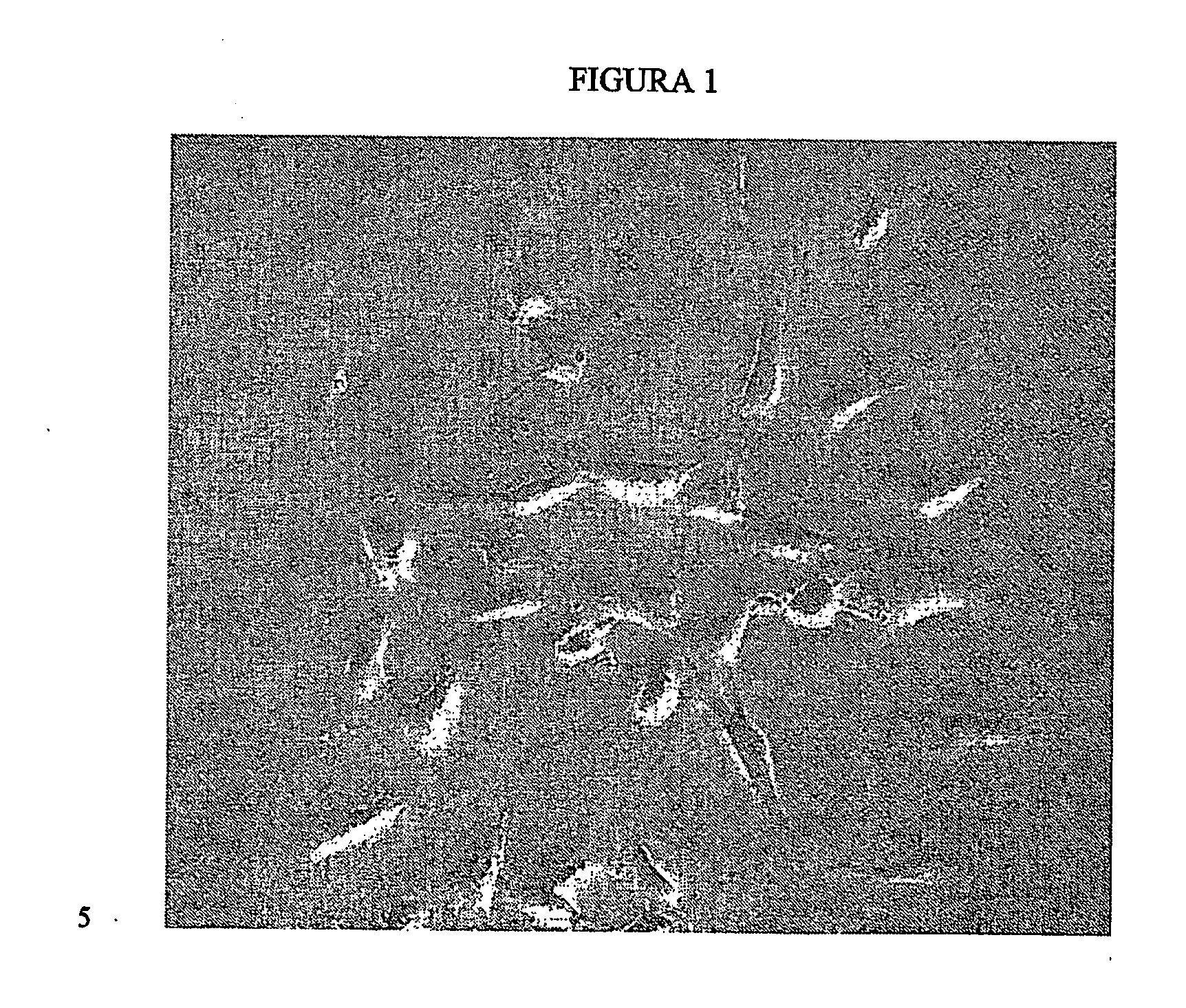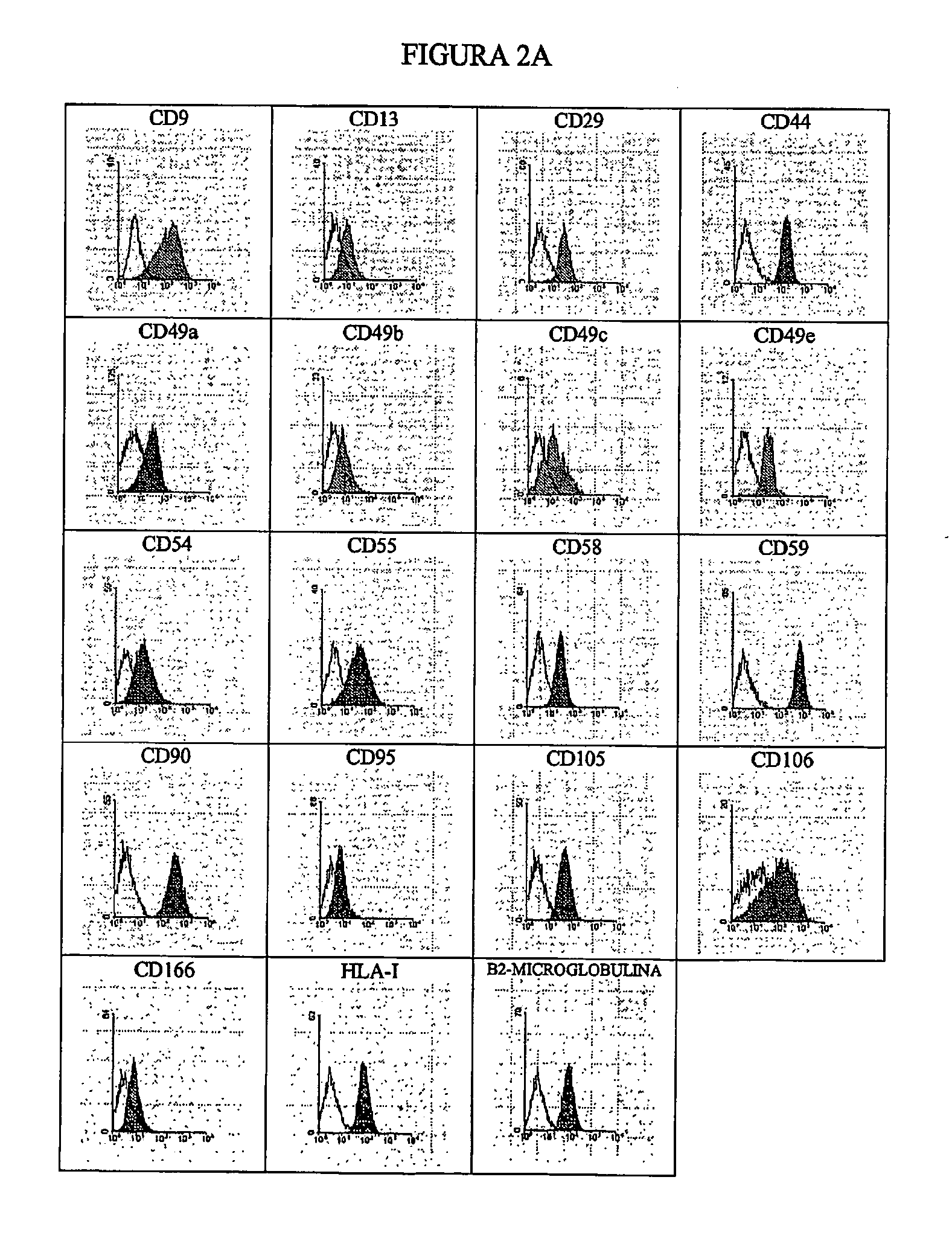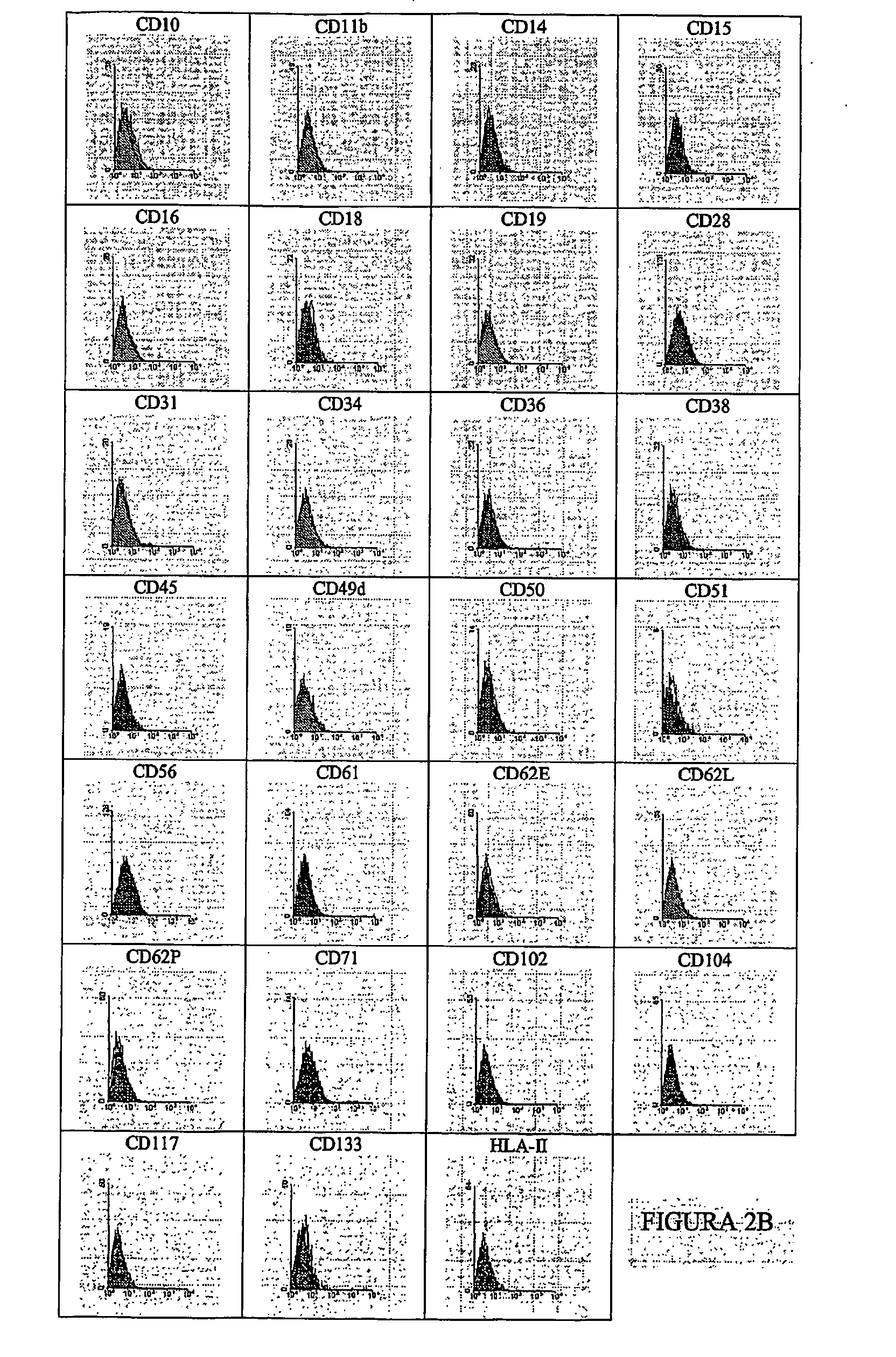Cartilage-derived stem cells and applications thereof
a technology of stem cells and cartilage, applied in the field of cartilage-derived stem cells, can solve the problems of inability to transplanted tissue with the immune system, inability to differentiate, and inability to carry out transplantation,
- Summary
- Abstract
- Description
- Claims
- Application Information
AI Technical Summary
Benefits of technology
Problems solved by technology
Method used
Image
Examples
example 1
Isolation of Chondrocyte-derived Multipotent Stem Cells Obtained from Human Articular Cartilage.
[0077] The procedure begins by obtaining a biopsy of cartilage from the outside edges of the femoral condyle by arthroscope. The size of the biopsy may vary depending on the structure of the articulation, the patient's age and the surgeon's discretion, but it is normally not smaller than 4 cm2. The biopsy is placed in a sterile saline solution at 4° C. until processing, which should not take place more than 48 hours after the sample is taken.
[0078] The cartilage biopsy is suspended in 1 millilitre of sterile basal culture medium (DMEM? Dulbecco Modified Eagle's Medium) containing L-glutamine 2 mM, antibiotics and 1% bovine fetal serum (BFS). The serum may also be of human origin, preferably autologous. The cartilage is then ground up using surgical scissors under aseptic conditions. The resulting cartilage fragments are added to a suspension containing 0.1% collagenase in the same mediu...
example 2
Immunophenotypical Characterisation of Multipotent Stem Cells Derived from Dedifferentiated Human Chondrocytes
[0080] The multipotent stem cells from dedifferentiated chondrocytes are collected by gentle digestion with trypsin, rinsed with PBS and incubated for 30 minutes at 4° C. with one of the following antibodies labelled with FITC or PE: CD9, CD10, CD11 b. CD13, CD14, CD15, CD16, CD18, CD19, CD28, CD29, CD31, CD34, CD36, CD38, CD44, CD45, CD49a, CD49b, CD49c, CD49e, CD50, CD51, CD54, CD55, CD56, CD58, CD59, CD61, CD62E, CD62L, CD62P, CD71, CD90, CD95, CD102, CD104, CD105, CD106, CD117, CD133, CD166, HLA-1, HLA-II and beta2-microglobulin.
[0081] The marked cells are rinsed and analysed immediately using an Epics-XL (Coulter) cytometre. The cells stained with unspecific antibodies of the isotypes marked with fluorescence (FITC) or phycoerythrin (PE) were used as controls. FIG. 2A shows the histograms indicating the positive marking of the cells, while FIG. 2B shows the histograms...
example 3
In Vitro Differentiation of Multipotent Stem Cells Derived from Dedifferentiated Human Chondrocytes to Osseous Phenotype Cells
[0082] The stem cells derived from dedifferentiated chondrocytes are seeded at a density of 20,000 cells / cm2 in a standard culture medium (DMEM, 10% BFS, L-glutamine 2 mM and antibiotic). After 12 hours the culture medium is replaced by an osteogenesis inductor medium (Jaiswal et al., 1997) composed of: [0083] MEM [0084] 20% BFS [0085] Penicillin / streptomycin [0086] L-glutamine 2 mM [0087] Dexamethasone 0.01 μM [0088] Ascorbic acid 0.2 mM [0089]β-Glycerophosphate 10 mM
[0090] Mineralised calcium phosphate deposits can be observed after 14 days which indicated the presence of bone nodules. The nodules are detected by staining with Alizarin Red (Standford et al., 1995) as detailed below: the medium is eliminated and rinsed with PBS; the samples are fixed with 70% ethanol for 1 hour at 4° C.; the sample is stained with 1 ml Alizarin red 40 mM pH 4.1 and the col...
PUM
| Property | Measurement | Unit |
|---|---|---|
| humidity | aaaaa | aaaaa |
| humidity | aaaaa | aaaaa |
| density | aaaaa | aaaaa |
Abstract
Description
Claims
Application Information
 Login to View More
Login to View More - R&D
- Intellectual Property
- Life Sciences
- Materials
- Tech Scout
- Unparalleled Data Quality
- Higher Quality Content
- 60% Fewer Hallucinations
Browse by: Latest US Patents, China's latest patents, Technical Efficacy Thesaurus, Application Domain, Technology Topic, Popular Technical Reports.
© 2025 PatSnap. All rights reserved.Legal|Privacy policy|Modern Slavery Act Transparency Statement|Sitemap|About US| Contact US: help@patsnap.com



